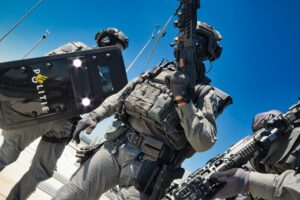Strategic Insights: How Military Operations Inspire Smarter Business Crisis Management


When businesses face crises—such as economic downturns, cyberattacks, supply chain disruptions, or reputational damage—they often mirror the uncertainty and high-stakes environment of military operations. Both arenas demand rapid decision-making, discipline, adaptability, and resilience. Military leaders have long relied on strategies and frameworks designed for chaotic and unpredictable environments, and these same lessons offer valuable guidance to business leaders navigating turbulent times. The key to surviving and thriving during business crises lies in understanding how to adapt military principles to corporate challenges.
The Power of Strategic Planning and Preparedness
In the military, no mission begins without a thorough plan. Strategic planning, scenario mapping, and contingency development are cornerstones of successful operations. Similarly, in the business world, proactive preparation can mean the difference between collapse and recovery. Companies that anticipate potential crises—through risk assessments and crisis simulations—build the muscle memory to respond effectively when real challenges arise.
Moreover, preparedness cultivates a culture of vigilance. Just as soldiers rehearse maneuvers repeatedly to ensure seamless execution under pressure, businesses should train teams for crisis response. This includes rehearsing public relations strategies, supply chain alternatives, and leadership succession plans. When a crisis hits, organizations that have rehearsed their response act with confidence and precision rather than panic.
Command and Control: The Value of Strong Leadership
Leadership is the backbone of any successful military campaign, and the same holds in business. In times of crisis, a company needs leaders who are visible, decisive, and calm under pressure. The military concept of “command and control” emphasizes clear hierarchy, responsibility, and communication—all essential when chaos threatens to take over. Strong leaders provide direction, rally morale, and make critical decisions when time is short and uncertainty is high.
However, effective leadership in crises is not about authoritarianism; it’s about balance. Military commanders often rely on the input of subordinates who possess local knowledge or technical expertise. Similarly, business leaders should empower their teams, allowing autonomy within a structured framework. This balance between centralized strategy and decentralized execution enables organizations to move quickly while maintaining alignment with overall objectives.
The Role of Discipline and Structure
In the face of chaos, discipline provides stability. Military personnel operate within clearly defined procedures and standards, which ensure that everyone knows their responsibilities and the chain of command. This structure minimizes confusion and maximizes efficiency. For businesses, cultivating a disciplined approach to operations—especially during crises—helps maintain consistency and order when uncertainty threatens to overwhelm teams.
Discipline also reinforces accountability. During crises, mistakes can be costly, and finger-pointing only deepens dysfunction. A disciplined organization fosters a culture where individuals take ownership of their actions and decisions. This encourages faster course corrections and a more cohesive recovery process, ensuring the company can rebound rather than fracture under pressure.
Intelligence Gathering and Situational Awareness
Successful military operations depend heavily on intelligence. Before engaging in any mission, commanders seek accurate, real-time information about terrain, enemy forces, and potential risks. In business crises, this translates into situational awareness—the ability to collect and interpret data swiftly to guide decisions. Whether it’s monitoring customer sentiment, analyzing financial metrics, or assessing supply chain vulnerabilities, timely intelligence enables companies to make informed, agile responses.
Moreover, situational awareness requires constant communication and information sharing across departments. When every team—from marketing to logistics—has access to updated data, the organization operates as a unified front. Just as a battlefield commander relies on reports from scouts and drones, CEOs must depend on analytics, technology, and feedback loops to stay ahead of evolving challenges.
Adaptability: Embracing Flexibility in the Face of Change
In military strategy, no plan survives first contact with the enemy. This principle underscores the importance of adaptability—a trait that businesses must cultivate to withstand crises. When confronted with unexpected developments, such as sudden market shifts or technology failures, rigid adherence to outdated plans can prove disastrous. Flexibility enables organizations to pivot swiftly and capitalize on new opportunities, even in the midst of turmoil.
Adaptability also fosters innovation. During the COVID-19 pandemic, for instance, many businesses repurposed production lines, launched new delivery models, or accelerated digital transformations. This mirrors how military units improvise when resources are limited or conditions change unexpectedly. By embracing adaptability as a mindset rather than a reaction, businesses transform crises into catalysts for growth and evolution.
Unity of Command and Team Cohesion
In military operations, “unity of command” ensures that every member of a unit understands the mission, their role, and who to follow. Fragmented leadership or conflicting directives can lead to disastrous outcomes. The same applies to business crises: when departments operate in silos or leaders send mixed messages, confusion undermines the company’s response. A unified chain of command fosters clarity, eliminates redundancy, and expedites decision-making.
Team cohesion is equally vital. Soldiers succeed because of trust—trust in leadership, in fellow soldiers, and in the mission. Businesses that cultivate trust and collaboration before a crisis are far more resilient when pressure mounts. Cross-functional teams that communicate openly and respect one another’s expertise can act quickly and effectively, just like a well-trained military unit executing a coordinated maneuver.
Morale and Motivation During Hard Times
Military history provides numerous examples of how morale significantly influences the outcome of battles, just as strategy does. In business crises, morale plays a similarly critical role. When employees lose motivation or faith in leadership, productivity and creativity decline. On the other hand, inspired teams often find ways to outperform expectations even under difficult conditions. Maintaining morale requires transparency, empathy, and recognition.
Leaders should communicate honestly about challenges while emphasizing shared goals and progress. Recognizing small victories, celebrating teamwork, and reinforcing purpose all help sustain morale. The military’s emphasis on camaraderie and mutual support serves as a model for businesses seeking to maintain unity in the face of adversity. When people feel valued and included, they’re more likely to give their best effort—even when the situation appears bleak.





